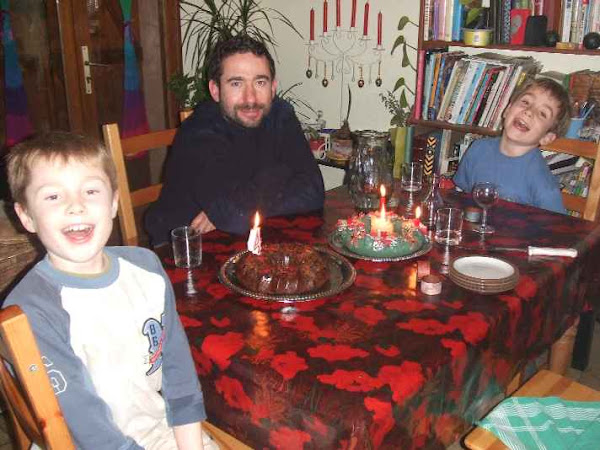 The boys have been wonderful this weekend, Son 2 producing a spaghetti bolognese to his own high standard yesterday evening (he does need me hanging around, but it was a whole lot better than making it myself), and Son 1 offering to take on the pudding when I was struggling with Sunday lunch today. He gave himself lots of time, and got everything together to produce this family favourite.
The boys have been wonderful this weekend, Son 2 producing a spaghetti bolognese to his own high standard yesterday evening (he does need me hanging around, but it was a whole lot better than making it myself), and Son 1 offering to take on the pudding when I was struggling with Sunday lunch today. He gave himself lots of time, and got everything together to produce this family favourite. It comes from a Stork Family Cookbook - Ben saved the Stork margerine wrappers for it when we were at university in the late '80s.
It comes from a Stork Family Cookbook - Ben saved the Stork margerine wrappers for it when we were at university in the late '80s. The above stage is the weird bit. You mix up a cake-type base and then sprinkle walnuts, sugar and cocoa on top. Over that you pour hot sugary coffee just before it goes into the oven!
The above stage is the weird bit. You mix up a cake-type base and then sprinkle walnuts, sugar and cocoa on top. Over that you pour hot sugary coffee just before it goes into the oven!
 Now, Ben and the boys did enjoy the pantomime very much. For those who'd like to know more about the pantomime, I've copied a bit from Wikipedia's entry - you can find the full details here.
Now, Ben and the boys did enjoy the pantomime very much. For those who'd like to know more about the pantomime, I've copied a bit from Wikipedia's entry - you can find the full details here.
Performance conventions
The form has a number of conventions, some of which have changed or weakened a little over the years, and by no means all of which are obligatory.
The leading male juvenile character (the 'principal boy') - is traditionally played by a young woman, and usually in tight-fitting male garments (such as breeches) that make her female charms evident.
An older woman (the pantomime dame - often the hero's mother) is usually played by a man in drag.
Risqué double entendre, often wringing innuendo out of perfectly innocent phrases. This is, in theory, over the heads of the children in the audience.
Audience participation, including calls of "He's behind you!" (or "Look behind you!"), and "Oh, yes it is!" and "Oh, no it isn't!" The audience is always encouraged to boo the villain and "awwwww" the poor victims, such as the rejected dame, who usually fancies the prince.
A song combining a well-known tune with re-written lyrics. The audience is encouraged to sing the song; often one half of the audience is challenged to sing 'their' chorus louder than the other half.
The animal, played by an actor in 'animal skin' or animal costume. It is often a pantomime horse or cow, played by two actors in a single costume, one as the head and front legs, the other as the body and back legs.
The good fairy always enters from stage right and the evil villain enters from stage left. In the medieval mystery plays the right side of the stage symbolised Heaven and the left side symbolised Hell.
Sometimes the story villain will squirt members of the audience with water guns or pretend to throw a bucket of 'water' at the audience that is actually full of streamers.
A slapstick comedy routine may be performed, often a decorating or baking scene, with humour based on throwing messy substances. Until the 20th century, British pantomimes often concluded with a harlequinade, a free-standing entertainment of slapstick. Nowadays the slapstick is more or less incorporated into the main body of the show.
In the 19th century, until the 1880s, pantomimes typically included a transformation scene in which a Fairy Queen magically transformed the pantomime characters into the characters of the harlequinade, who then performed the harlequinade.[7]
The Chorus, who can be considered extras on-stage, and often appear in multiple scenes (but as different characters) and who perform a variety of songs and dances throughout the show. Due to their multiple roles they may have as much stage-time as the lead characters themselves.















.jpg)




































































































































